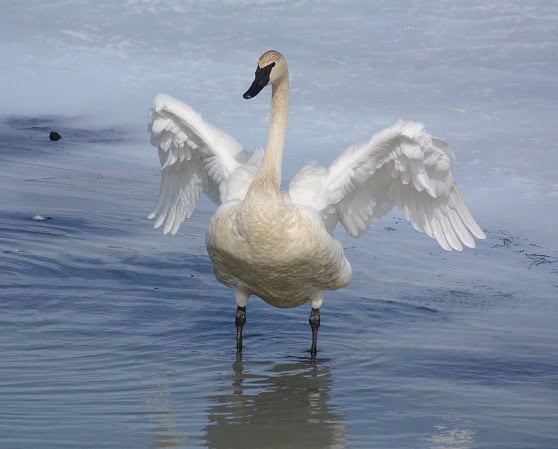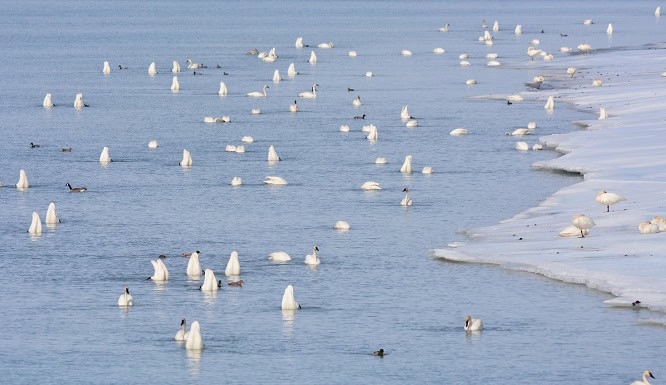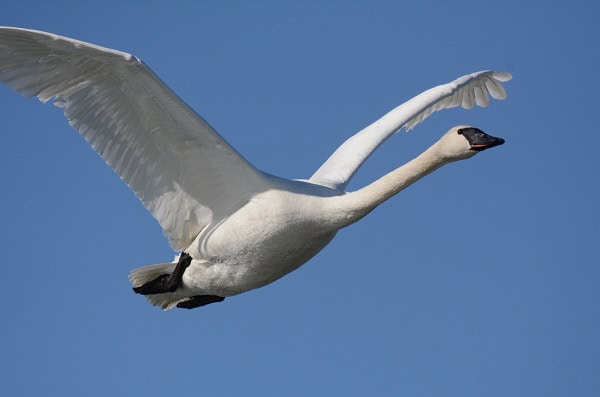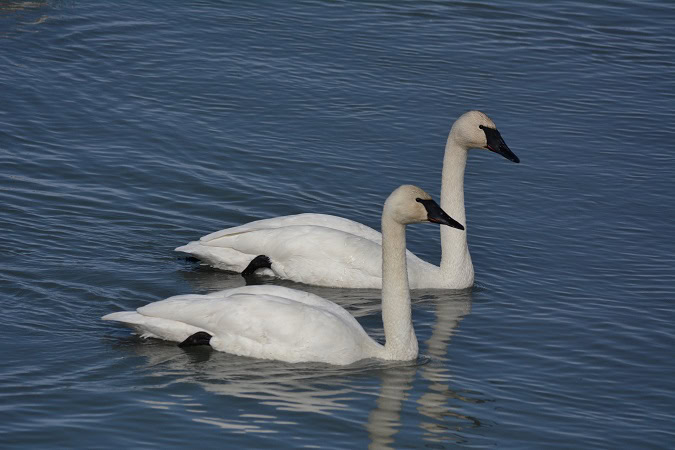
Can you imagine seeing 1000 huge white swans?
I have been waiting more than a month for the Trumpeter Swan migration to begin. At the end of March, Trumpeter Swans start arriving in the Yukon in small numbers. By early April, there are hundreds, and by mid-April, there are thousands.
The Trumpeter Swan is the largest North American bird, weighing about 10.5 kg (23 pounds) or more. Some weigh as much as 13.6 kg. A Wild Turkey, by comparison, has a maximum weight of about 7.4 kg. Their wingspan can range from 185 to 250 cm (6 feet to 8 feet, 2 inches).
Trumpeters spend the winter months at several locations, mostly along the west coast of British Columbia, Washington, and Oregon, but also in large numbers south of the Great Lakes and at other places in the northwest U.S.A.
In March, they begin their journey north. They first congregate at Fraser Lake in northern British Columbia for a while, then move further north. They settle at Marsh, Tagish, Teslin, Laberge and Kluane Lakes in the Whitehorse area in the Yukon.

By mid-April, I had observed more than 500 Trumpeter Swans at Marsh Lake and more than 800 at Tagish. Just imagine seeing 800 of these magnificent birds stretched out along the coast of the lake for as far as the eye can see. What an amazing sight! This was one of the main events I wanted to see on my trip to northern Canada.

As I stood on the shore of Lake Tagish, a few Trumpeters flew just overhead. Imagine a huge bird, much bigger than a Turkey, flying straight toward you and then just a few metres above you. What a thrill!
The Trumpeters will hang out in these lakes for about one month. About April 25th the population reaches a peak. Then, they start to depart, in pairs, for the place where they will spend the summer. They spread out in the thousands of small lakes across northern British Columbia, the Yukon and Alaska. A few will nest in lakes further south across northern U.S.A. and southern Canada and don’t make the journey to the north.

On small lakes, you will find only two of them. They usually mate for life when they are between four and seven years old. A larger lake might have four or more swans. During migration, they are in flocks of hundreds, but during the summer breeding season, they do not like to be crowded. They need a lot of space to take off, like a runway on water. They cannot simply jump up in the air and fly away like a sparrow. Their diet is mostly aquatic plants. You will often see them feeding with most of their body underwater, with only their rear end above the surface. (You have probably seen ducks do this). They often live to be more than twenty years old.
In the 19th century, the Trumpeter Swan was a common bird throughout most of North America, but it was heavily hunted for food and feathers. Today, the vast majority of Trumpeter Swans live in the Yukon and Alaska during summer and along the British Columbia coast during winter.

No trip to the Yukon is complete without seeing a least of couple of these magnificent birds.